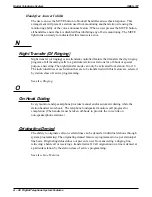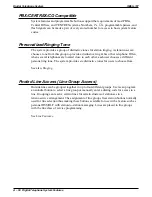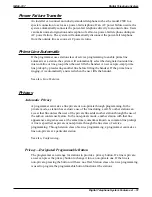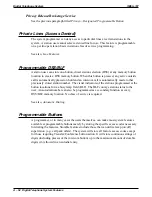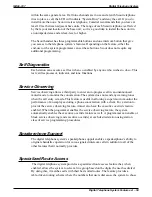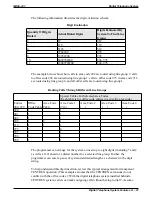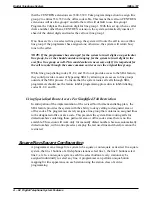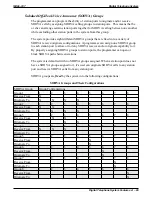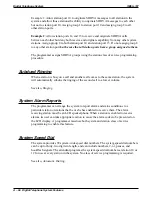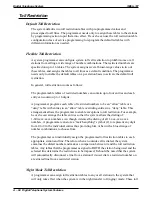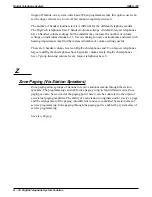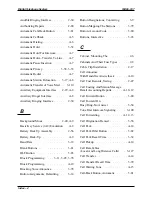
that the CENTREX extensions are 3300–3399. Take programming action to assign line
group 2 to entries 330–339 in the office code table. This means that calls on CENTREX
extensions will use line group 2 and all other calls will default to use line group 1.
Program the 9 digit as the insertion digit for line group 1. With this set up, when a caller
dials a number other than a CENTREX extension, the system automatically inserts a 9
ahead of the dialed digits and routes the call over line group 1.
If no lines are free in a selected line group, the system will route the call to an overflow
line group if the programmer has assigned one; otherwise, the system will return busy
tone to the caller.
NOTE: If the programmer has arranged for the system to insert digits on a particular
line group, he or she should consider arranging for the system to insert digits in the
overflow line group as well. This consideration is necessary only if it is important for
the call to route through the same common carrier as was the original line group.
While line group dialing codes 81, 82, and 83 do not provide access to the SRA feature,
they could provide a means of bypassing SRA by allowing users access to line groups
outside of the SRA process. To insure that the system routes all calls through SRA,
programmers should use the feature inhibit programming procedure to inhibit dialing
codes 81, 82, and 83.
Using Specialized Route Access For Simplified Toll Restriction
In anticipation of the implementation of the revised North American dialing plan, the
SRA feature provides the system with the ability to deny calling to designated area or
office codes. The programmer merely assigns a line group that contains no assigned lines
to the designated office or area code. This prevents the system from routing calls for
dialed numbers containing those particular area or office codes since there is no line
available. This action will work only for manually dialed numbers because automatically
dialed numbers, with no line preselect, employ the last used line and therefore cannot be
restricted.
Square/Non-Square Configuration
A programmer can arrange for a system to be square or non-square as desired. In a square
system, the line 1 buttons of all telephone stations select line 1, the line 2 buttons select
line 2, etc. In a non-square system, each line select button at every station may be
assigned individually to select any line. A programmer can perform unique button
mapping for line appearance on each station using the station class of service
programming.
Digital Telephone System
IMI66–107
A – 62 Digital Telephone System Features
Summary of Contents for Air Impact DSU
Page 2: ...Printed in U S A GCA47 157 ...
Page 30: ......
Page 112: ......
Page 192: ...Digital Telephone System IMI66 107 3 80 System Programming ...
Page 283: ......
Page 284: ......
Page 285: ......
Page 286: ......
Page 287: ......
Page 288: ......
Page 289: ......
Page 290: ......
Page 291: ......
Page 292: ......
Page 293: ......
Page 294: ......
Page 295: ......
Page 296: ......
Page 297: ......
Page 298: ......
Page 299: ......
Page 300: ......
Page 301: ......
Page 302: ......
Page 303: ......
Page 304: ......
Page 305: ......
Page 306: ......
Page 307: ......
Page 308: ......
Page 309: ......
Page 310: ......
Page 311: ......
Page 312: ......
Page 313: ......
Page 314: ......
Page 315: ......
Page 316: ......
Page 317: ......
Page 318: ......
Page 319: ......
Page 320: ......
Page 321: ......
Page 322: ......
Page 323: ......
Page 324: ......
Page 325: ......
Page 326: ......
Page 327: ......
Page 328: ......
Page 329: ......
Page 330: ......
Page 331: ......
Page 332: ......
Page 333: ......
Page 334: ......
Page 335: ......
Page 336: ......
Page 337: ......
Page 338: ......
Page 339: ......
Page 340: ......
Page 431: ......
Page 436: ......
Page 437: ......
Page 438: ......

